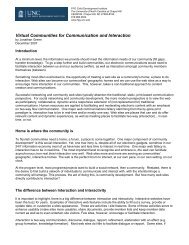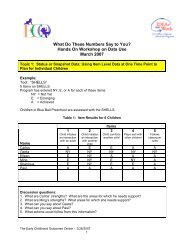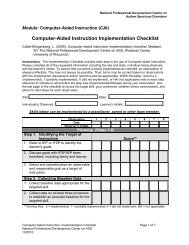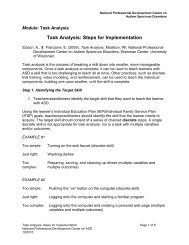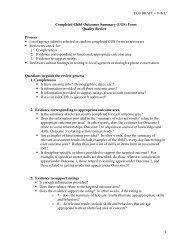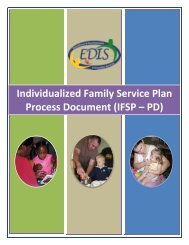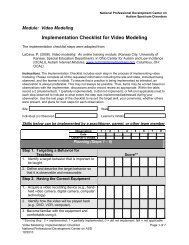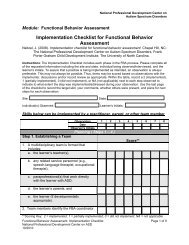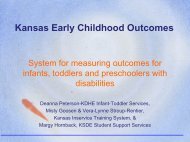Implementation Checklist for PRT - National Professional ...
Implementation Checklist for PRT - National Professional ...
Implementation Checklist for PRT - National Professional ...
You also want an ePaper? Increase the reach of your titles
YUMPU automatically turns print PDFs into web optimized ePapers that Google loves.
<strong>National</strong> <strong>Professional</strong> Development Center on<br />
Autism Spectrum Disorders<br />
Module: Pivotal Response Training (<strong>PRT</strong>)<br />
<strong>Implementation</strong> <strong>Checklist</strong> <strong>for</strong> <strong>PRT</strong><br />
Vismara, L. A. (2009). <strong>Implementation</strong> checklist <strong>for</strong> <strong>PRT</strong>. Sacramento, CA: The <strong>National</strong><br />
<strong>Professional</strong> Development Center on Autism Spectrum Disorders, M.I.N.D Institute,<br />
University of Cali<strong>for</strong>nia at Davis Medical School<br />
Instructions: The <strong>Implementation</strong> <strong>Checklist</strong> includes procedures <strong>for</strong> implementing each pivotal behavior.<br />
Please complete all of the requested in<strong>for</strong>mation including the site and state, individual being<br />
observed/interviewed, and the learner’s initials. To assure that a practice is being implemented as<br />
intended, an observation is always preferable. This may not always be possible. Thus, items may be<br />
scored based on observations with the implementer, discussions and/or record review as appropriate.<br />
Within the table, record a 2 (implemented), 1 (partially implemented), 0 (did not implement), or NA (not<br />
applicable) next to each step observed to indicate to what extent the step was implemented/addressed<br />
during your observation. Use the last page of the checklist to record the target skill, your comments,<br />
whether others were present, and plans <strong>for</strong> next steps <strong>for</strong> each observation.<br />
Site: ________________________________________ State: _________________________________<br />
Individual(s) Observed: ________________________ Learner’s Initials: ________________________<br />
Skills below can be implemented by a practitioner, parent, or other team member<br />
PIVOTAL BEHAVIOR: PROMOTING SELF-INITIATIONS USING LEARNER-<br />
INITIATED STRATEGIES<br />
Observation 1 2 3 4 5 6 7 8<br />
Date<br />
Observer’s Initials<br />
Intervention (Steps 1 – 4)<br />
Step 1. Teaching Social Initiations<br />
1. Teach the learner with ASD:<br />
Score**<br />
a. ways to initiate social interactions with<br />
others by sharing materials (e.g.,<br />
handing peer a block, and asking “Can I<br />
have some blocks”).<br />
b. how to organize play activities (e.g., “You<br />
build the road, I’ll build the bridge,”<br />
handing a peer a baseball glove while<br />
keeping the bat).<br />
**Scoring Key: 2 = implemented; 1 = partially implemented; 0 = did not implement; NA = not applicable<br />
Pivotal Response Training: <strong>Implementation</strong> <strong>Checklist</strong> Page 14 of 18<br />
<strong>National</strong> <strong>Professional</strong> Development Center on ASD<br />
10/2010




